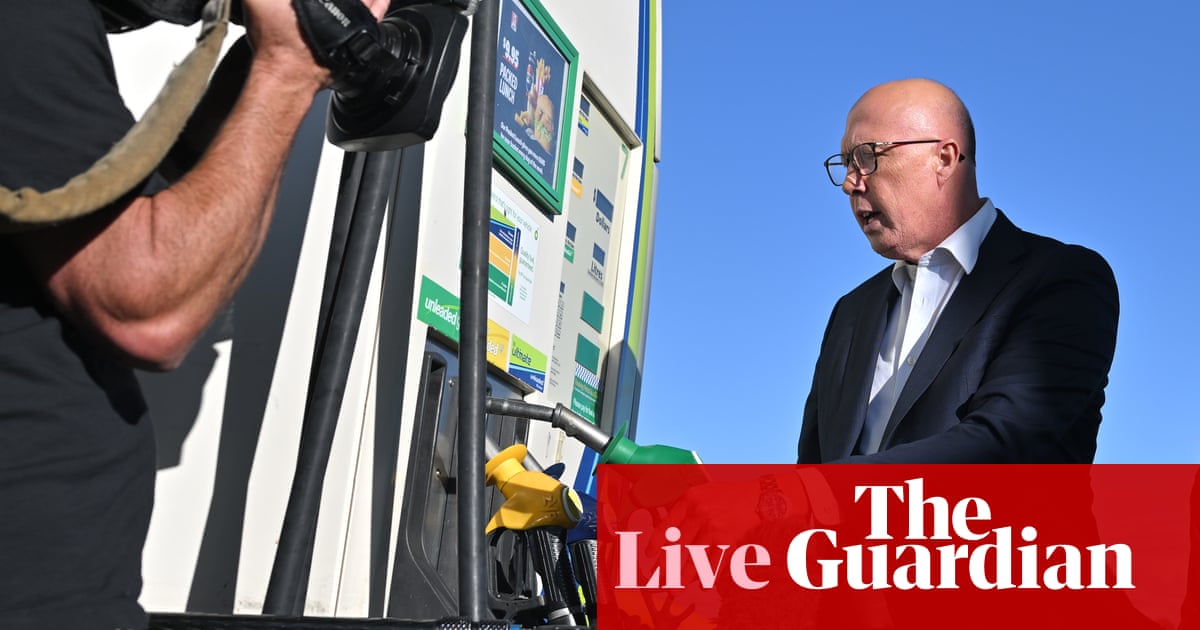In our election editorial today, we argue thatAnthony Albanesehas governed steadily but perhaps too slowly to address the country’s problems.
His campaign shows that he wants to unite middle Australia rather than polarise voters.Peter Dutton, who is a better natural communicator, has nevertyheless run a poor campaign dogged by lack of policy detail and u-turns.
If progressives want faster change they should consider voting for the Greens, teals or other alternative candidates in the hope of electing a minority Labor government with a progressive crossbench.
Peter Duttonneeds a “miracle”to win Saturday’s election, theDailyTelegraphreports, as it publishes the last RedBridge-Accent national poll of the campaign.
The survey, which tallies with a Nine newspaper poll yesterday, shows that Labor has extended its lead to 53-47 on a two-party preferred basis since the start of April. In November theCoalitionwas ahead by 51-49.
Fears about global uncertainty caused by Donald Trump and the expected high cost of the Coalition’s plan to build nuclear reactors have decisive in turning voters to Labor, the poll found.
Younger and ethnically diverse voters have been especially important, the poll shows, with a higher proportion of them living in marginalk urban seats.
Back to Back Barries: final election night predictions
In this special pre-election episode, co-hosts Tony Barry and Barrie Cassidy pull apart the final messages of the campaign, delve into the polling and deliver their last verdicts on how they think it will play out on Saturday night.
Listen here:
The median value of an Australian dwelling increased approximately $2,720 in April, after a third straight month of growth, according to Cotality’s national home value index.
Over the past 25 years, the price of a typical home has jumped from four times the median income in the early 2000s,to more than eight times, with rates of home ownership among younger Australians dropping dramatically as a result.
A lift in home values was recorded across every capital city, ranging from a 0.2% rise in Sydney and Melbourne to a 1.1% gain in Darwin.
Regional housing values have continued to outpace the capitals, with values up 0.6% and 0.2% respectively over the month of April.
Cotality’s research director, Tim Lawless, said:
Good morning and welcome to our live election blog. I’mMartin Farrerwith the top overnight stories and thenKrishani Dhanjiwill take over.
Our top story this morning is on the “handshake” deal by the Nationals to move One Nation up its preference list that could help win the New South Wales electorate of Hunter. The deal has been made despitePauline Hanson’scandidatebeing known for calling public health officials “little Hitlers” and promoting a conspiracy theory that the climate crisis has been used to control every aspect of people’s lives.
The Coalition will release its long-awaited policy costings today, claiming that they will show thebudget would be more than $10bn better offand debt would be $40bn lower over the next four years than under Labor. A re-elected Coalition government would have toslash net migration of students and temporary skilled workersby 90% to reach its “impossibly heroic” goal of reducing net migration to 160,000 next financial year, a Guardian analysis shows.
The median price of a home has risen for the third month in a row, according to data this morning from the research firm Cotality. The median value of an Australian dwelling increased about $2,720 in April, according to Cotality’s national home value index. More coming up.
